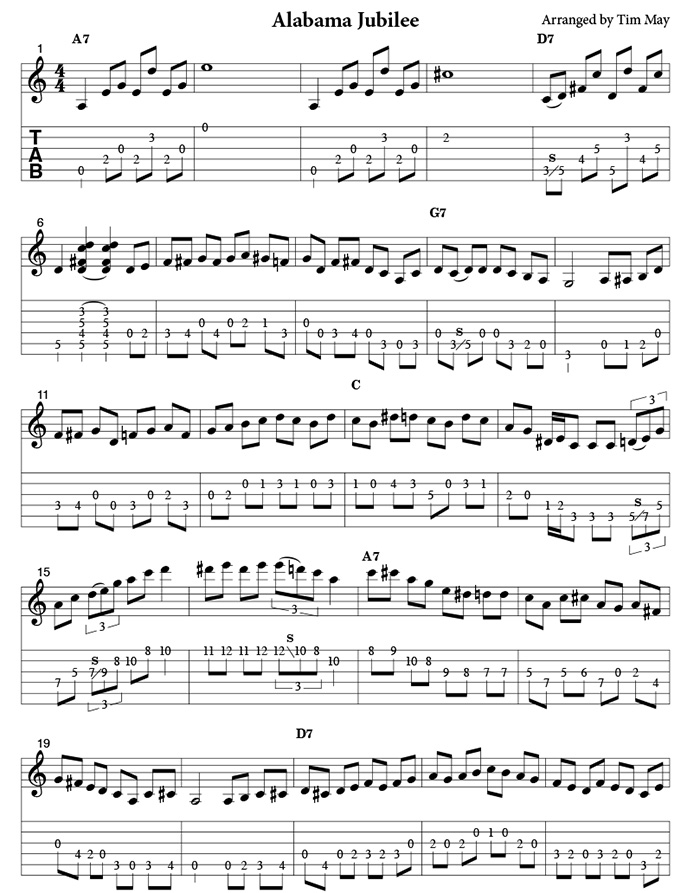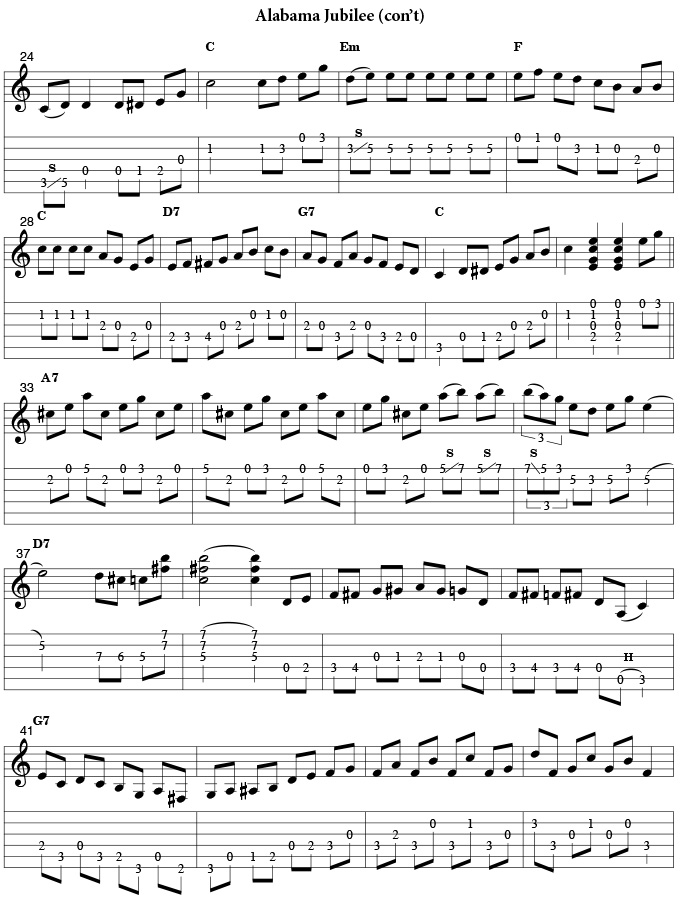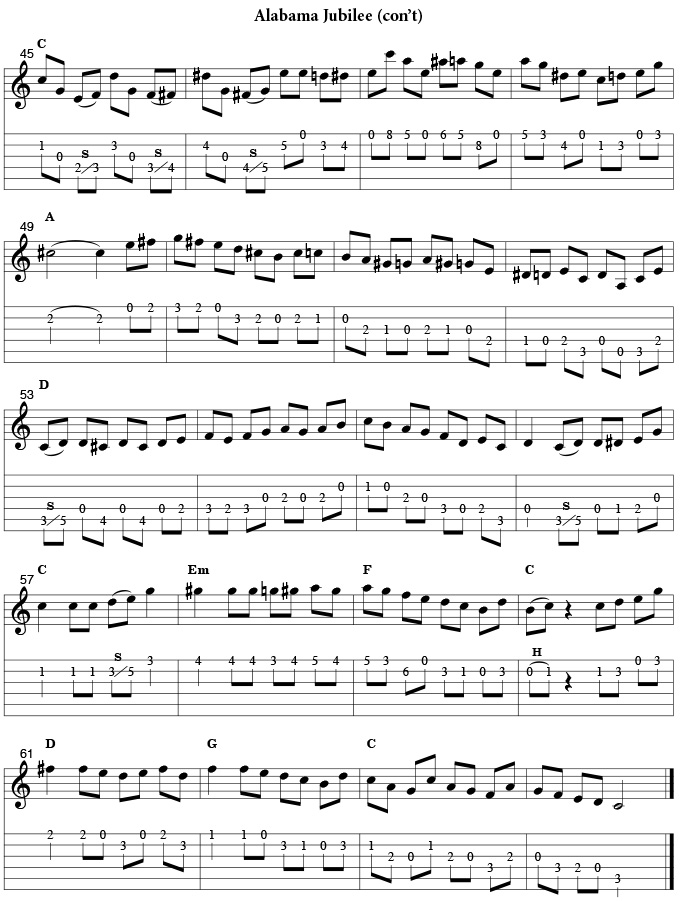|
Flatpicking Guitar Magazine
Free Monthly Lesson
December 2017
“Alabama Jubilee”
Arranged by Tim May
Download PDF | Download mp3
This month our regular free monthly lesson instructor, Mickey Abraham, was away on holiday vacation and so for this month we are providing an arrangement of “Alabama Jubilee” that is a transcription of an improvised solo played by Tim May for Volume 6 of the Flatpicking Essentials book series. Here are some notes that go along with Tim’s solo:
Right off the bat, Tim provides a unique opening that pretty much outlines the chords. In the first measure Tim outlines the A7 chord. The notes of the chord are A, C#, E, and G. Tim plays the root and seventh notes, with an added D note for flavor. He ends this section by hitting the 3rd scale degree as a whole note at the beginning of the next measure. In measure 3, he plays the same figure as measure 1, then end this passage by playing a C# whole note. So, in these first four measures he has played every note of the A7 chord, with the root and flat 7 being the most prominent and a D note (4th scale degree) being thrown in for interest. Then in measures 5 and the first three beats of measure 6, he outlines the D7 chord, using the D7 chord shape.
Over the remainder of the D7 chord, Tim uses the D mixolydian scale in combination with a chromatic run at the beginning and the use of the G# neighboring note on the fourth beat of measure 7. Over the G7 chord Tim plays scale tones that are embellished with a passing tone (A# in measure 10) and a neighboring note (the F# note in measure 11 - remember we are playing over the G7 chord, so the F# note is not in the chord). In measure 11 Tim clearly defines the tonality of the G7 chord by playing the F note three times. You may recognize the last three beats of measure 12 moving through the first beat of measure 13 as a piece of a folded scale.
In the next several bars (14-16) notice how Tim provides a bit of tension by moving way up the neck and then he releases that tension in the descending line (measures 18 and 19). This is a great effect, especially since he ascends during the “stop time” section (when the rhythm drops out). For the remainder of the B section Tim sticks fairly close to the melody. Notice the use of tremolo in measures 26 (over the Em chord) and 28 (over the C chord). Also notice that Tim ends the first pass with a key of C “G-run.”
At the beginning of the second pass on this tune Tim gives you a very cool repetitive lick over the A7 chord. If you take a very close look at the six notes that are repeated in this phrase, the first thing that you see is that they are all chord tones of the A7 chord. Then, if you look at the standard notation, you’ll see that it looks like a crosspicking roll. So, basically what you have here is a crosspicking-style roll using the chord tones, but it is only played on two strings. Very cool! For lack of a better term, we’ll refer to this as playing a “two string arpeggio.”
In measure 37 Tim adds a bit of dissonant harmony with a D13 chord. Then he makes great use of the neighboring note (toggle) technique in measures 39 and 40. Then in measures 43 and 44 he really gives your ear a taste of the G7 tonality by using the F note as a drone. In measures 45 and 46 Tim combines reverse roll crosspicking with movement up a harmonized scale. The scale is the C scale on the B string, the harmony is on the D string. The open G string is a drone. The scale movement goes: C, D, D#, E, so the D# note is used as a passing tone.
This is a solo that demonstrates some great intermediate and advanced flatpicking technique. We hope you enjoy working with this one!



|